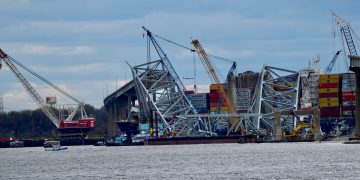The question is what flash point limit represents an acceptable safety risk on board ships
 The international shipping organisation BIMCO and the shipping giant Maersk have suggested that the time has come to review the regulatory minimum flash point limit for marine fuels, in particular for marine distillates.
The international shipping organisation BIMCO and the shipping giant Maersk have suggested that the time has come to review the regulatory minimum flash point limit for marine fuels, in particular for marine distillates.
The International Maritime Organization (IMO) SOLAS regulation requires that fuel used on board ships shall have a flash point of not less than 60C. This is also stated as the minimum flash point limit for marine fuels in ISO 8217, the global fuel standard from the International Organization for Standardization (ISO).
Flashpoint refers to the lowest temperature at which a fuel can vaporise to form an ignitable mixture in air. Lowering the flash point for marine distillates from 60C to 55C would bring it into line with the limit for inland distillate fuels in Europe and potentially open up a wider supply basis for the marine fuels market.
Demand for low sulphur marine gas oil (MGO) has been growing due to European Union (EU) requirements for ships at berth to use fuels with maximum 0.1% sulphur content. Demand for this fuel is expected to surge when the sulphur limit in Emission Control Areas (ECAs) falls to 0.10% in 2015 under the IMO’s MARPOL Annex VI regulation.
Reports suggest there has already been an increase in supply of low sulphur marine MGO where the flash point is near or below the minimum 60C limit, indicating that some fuels from the inland market are finding their way into the marine fuels sector.
Incidents of MGO failing to meet the ISO and SOLAS flash point limit could increase as demand grows, leading to more off-specification claims between bunker suppliers and buyers.
Because of the safety risk associated with the flash point being below the limit, and the statutory nature, such off-specification incidents are viewed as particularly serious. The testing agency DNV Petroleum Services (DNVPS) has warned that marine fuels with flash point below 60C violate Classification
Rules as well as the SOLAS regulation, and could render a ship ‘out of class’.
The reasoning behind the 60C minimum limit in the SOLAS requirement appears to have been lost in the mists of time, but work is going on at the ISO to collate information on flash point regulations to establish the reasons, as well as why there are differences between flash point requirements for inland and marine gas oils.
Observers have noted that distillate fuels with lower flash points are often used in land-based vehicles and equipment in very hot conditions, without incident.
Niels Henrik Lindegaard from Maersk Oil Trading told the SIBCON 2010 conference that “the technology and knowledge of safe fuel handling has come a long way” since the IMO rules regarding flash point were created in 1974.
The managing director of DNVPS, Eirik Andreassen, told Bunkerworld that changing the flash point limit for marine fuel “will be a daunting task” that will require a range of IMO conventions, codes and resolutions that refer to the current limit to be assessed for safety implications before any changes can be made
“Our view is of course that the safety imperative must not be compromised. Therefore, all proposed changes to any standards and practices must be supported by conclusive scientific research,” he stressed.
Ultimately, the question boils done to what flash point limit represents an acceptable safety risk on board ships, and if the limit considered acceptable for land-based fuels can be translated to safe ship operations.
Source : Bunker world






























































